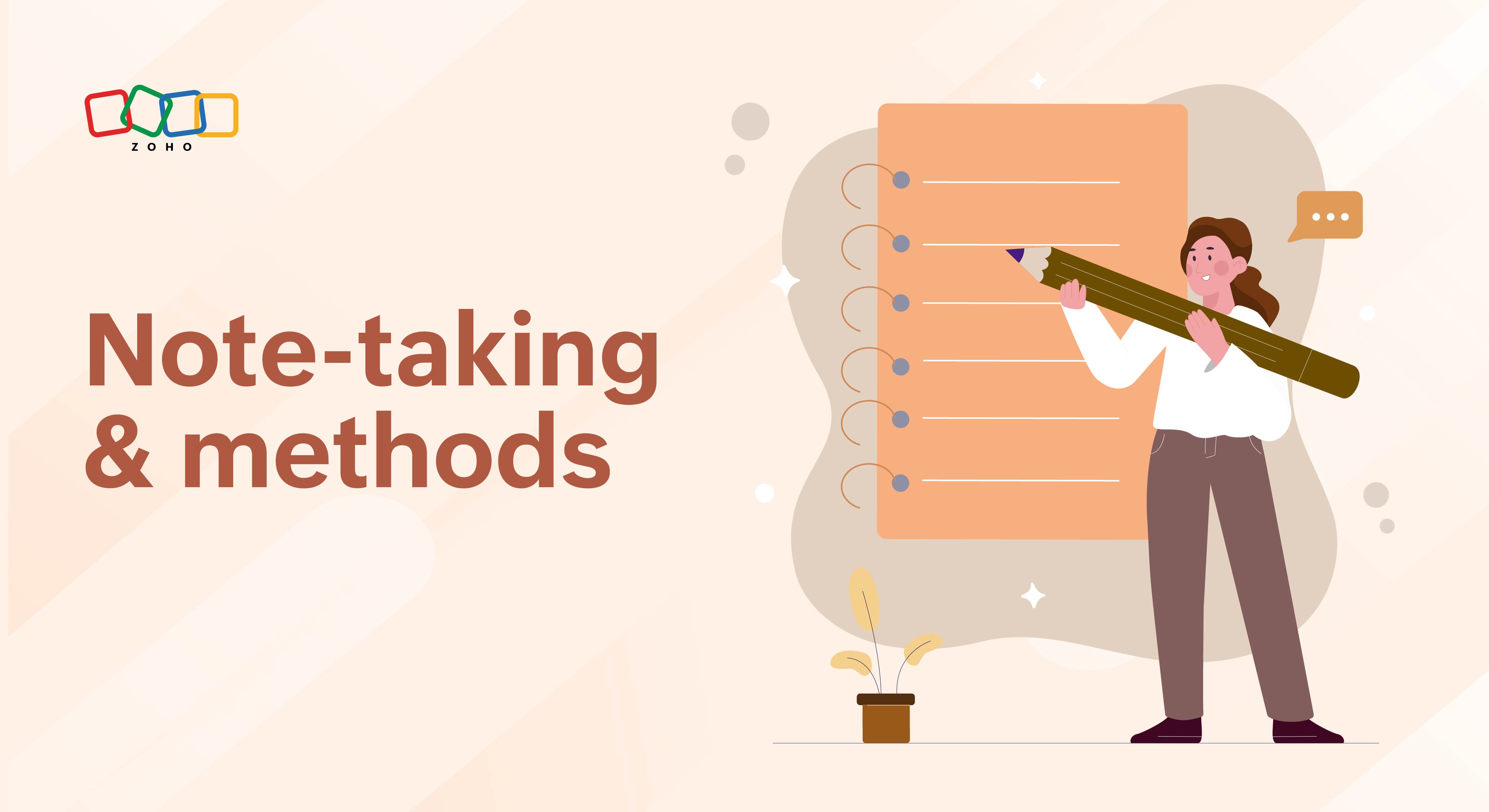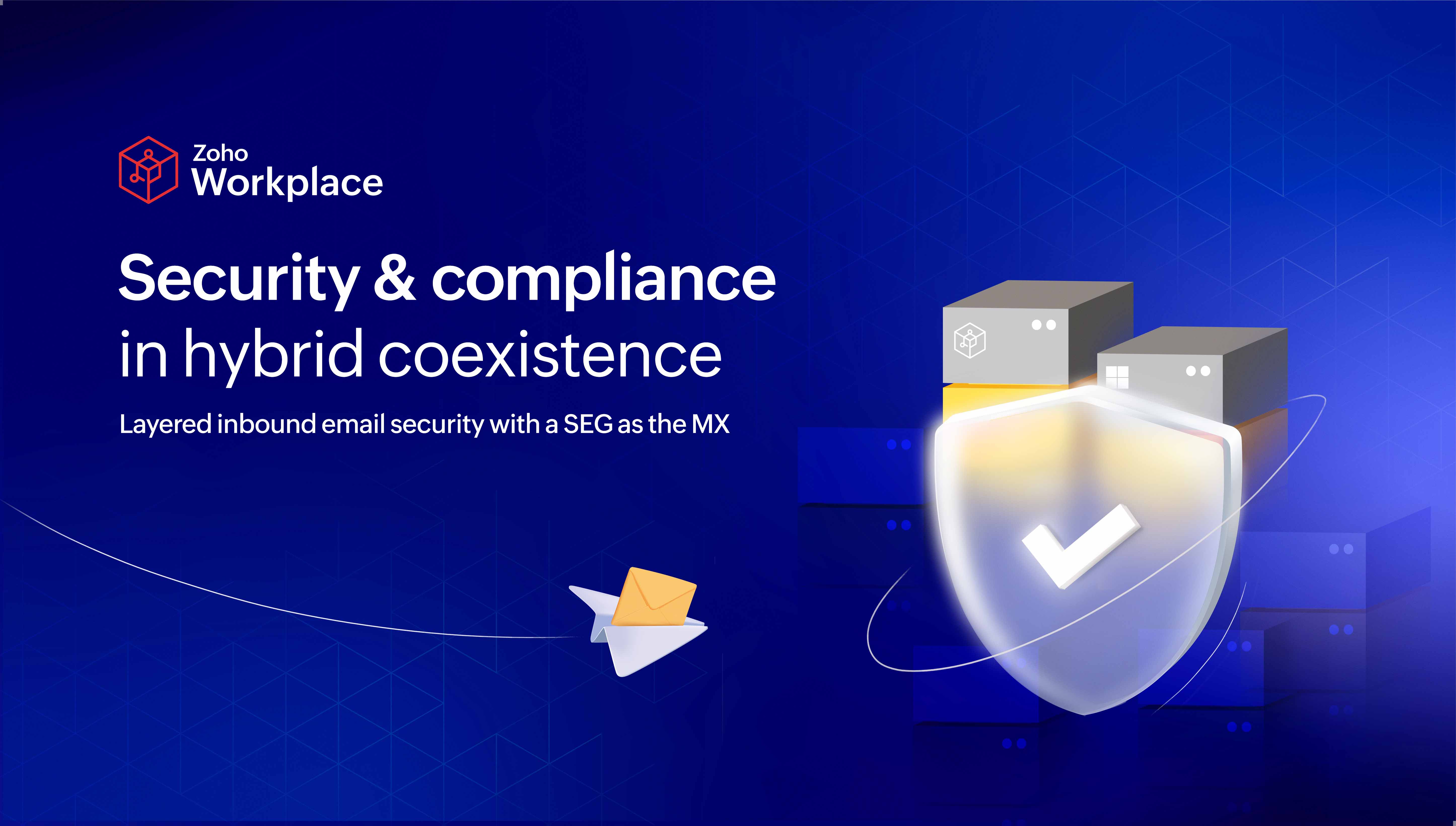- HOME
- All Products
- Note-taking & methods
Note-taking & methods
- Published : November 27, 2023
- Last Updated : October 17, 2024
- 1.0K Views
- 11 Min Read
Let’s talk about note-taking—an essential skill for both students and professionals alike. This guide will walk you through the what, why, and how of note-taking. You’ll discover various strategies and choose the one that aligns with your needs, ensuring the notes you take today become the knowledge you recall tomorrow.
Choosing your note-taking method
There’s no one-size-fits-all approach to note-taking. The best method for you hinges on the content type and your personal learning style. We’ll explore six popular methods to help you find a method that’ll take your knowledge acquisition to the next level.
The outline method
The outline method is a classic, structured form of note-taking that mirrors the natural flow of information, particularly useful in settings where content is delivered in a linear and logical format.
This method is kind of like creating a map of your material where major topics are cities, subtopics are streets, and details are the buildings along those streets. It’s in-depth and, depending on the subject matter, might be the most suitable for your needs.
Pros:
- By discerning main ideas from details, you’re actively engaged with the material.
- Notes are structured in a way that makes them easier to review for exams or reports.
Cons:
- Can be limiting when dealing with discussions that deviate from the main topic.
- You might get caught up in the details, noting down less relevant information.
The Cornell method
The Cornell method elevates note-taking to a cognitive exercise, prompting you to engage with your notes through keywords, summaries, and questions. It’s a layout that not only records but also processes and understands, making it perfect for deep dives into the material and ensuring you’re actively learning, not just passively recording.
Pros:
- By summarizing the notes, you’re forced to process and understand the information.
- The structure makes it easy to transform your notes into a study guide.
Cons:
- Might not suit subjects that require extensive note-taking on complex details.
- Requires setting up your pages ahead of time, which may not be feasible in every situation.
The boxing method
The boxing method harnesses visual learning by having you draw boxes around groups of related information, which can enhance memory and comprehension. It’s particularly effective for those who thrive on visual cues, allowing for a segmented yet cohesive view of notes.
This method turns a standard page of notes into a clearly defined map of concepts, each in its own visual compartment. As such, some people will be more adept at utilizing this method than others.
Pros:
- Helps in distinguishing and organizing different ideas or concepts visually.
- Allows you to color-code or decorate your notes, making the learning process more engaging.
Cons:
- There’s a risk of focusing too much on the method rather than the material.
- Not the quickest way to take notes, especially in settings where information is presented rapidly.
The charting method
The charting method is like creating a mini-spreadsheet for your notes. Each column serves a distinct category, making it an excellent strategy for subjects rich in data and statistics.
It’s particularly beneficial for visualizing relationships between different data sets, streamlining the review process, and aiding in the retention of factual information.
Pros:
- Ideal for subjects like statistics or historical dates.
- Makes studying straightforward, as information is categorized neatly.
Cons:
- Struggles with lectures that don’t follow a predictable format.
- Needs you to anticipate the categories before the lecture begins.
The mapping method expanded
The mapping method is designed to let you formulate a journey through a landscape of ideas. How? It starts with a central theme and then branches out to related topics, enabling you to weave a tapestry of interconnected concepts.
This method is especially useful for subjects where understanding the connections between ideas is essential to grasping the overall picture.
Pros:
- Encourages you to see the relationships between ideas, promoting a better understanding.
- A well-organized map can be a powerful study aid.
Cons:
- Can be tricky to fit everything on one page without clutter.
- Not the best choice for those who prefer straightforward, linear note-taking.
The sentence method expanded
The sentence method is a sequential approach to note-taking, where each new piece of information is a fresh line. This tactic excels in scenarios where information flows quickly and you need to capture it in real-time.
This method is known for being particularly straightforward. It allows for a chronological account of data, which can be quite useful for later reconstruction of events or lectures.
Pros:
- Allows for quick note-taking, which is perfect for rapid-fire lectures.
- Adaptable to any subject matter without prior preparation.
Cons:
Might make reviewing notes challenging due to a lack of organization.
Can result in a piecemeal understanding of the topic.
Note-taking beyond professional purposes
As we approach the culmination of our note-taking exploration, let’s pivot to how those skills can be applied outside of work. One unexpected, yet useful, application of these skills is in managing your finances.
Just as an effective note-taking strategy can clarify and enhance the absorption of information, a similar approach to tracking your finances can lead to profound clarity in your economic life.
You can also apply some of these principles to your private life, such as properly taking notes about your earnings and expenditures so you don’t have to wait for the last day to file taxes.
Keeping a detailed ledger of your financial dealings not only prepares you for a stress-free tax season but also empowers you to make better-informed decisions in life, in general. If you’re willing to give note-taking a try, add the following tips to your arsenal.
- Consistency is key: Regularly update your notes just as you would with class or meeting notes.
- Categorize: Use the charting method to separate knowledge tidbits into categories for a clear view of what you learned and when.
- Summarize: At the end of each month, do a Cornell-style summary to distill what you’ve learned about each topic you’re ‘aiming for, whether it’s work-related, curiosity-driven, personal, or completely random.
- Review: Periodically review your notes to spot trends and adjust your approach to learning accordingly.
By integrating these note-taking techniques into your financial routine, you can elevate your money management to a new level of efficiency and insight, ensuring you’re as prepared for fiscal responsibilities as you are for academic challenges.
Note-taking in the digital age: Security considerations
With the convenience of digital note-taking comes the need for vigilance in protecting sensitive information. As you choose the right app or software for your note-taking needs, you should be mindful of the data you include in your notes. Sure, having all of your passwords, for example, stored in one easily accessible file is convenient, but it’s far from safe.
Also, be wary of what you put in your notes and what software you use. In fact, choosing the right note-taking app and being discreet with your writing is the fastest and easiest way to learn how to prevent identity theft. While some of your colleagues will write down passwords and personal information, it’s best that you stick to your password manager for anything sensitive.
This caution shouldn’t be limited just to passwords, however; any sort of personal information, as well as work-related notes, pose a security risk either to you or your employer if compromised, so be vigilant. Almost all sensitive information goes through your email address at one time or another, so make sure you use an email provider that supports security features such as two-factor authentication (TFA) and spam filters, and insists on setting a strong password.
By being selective about the information you digitize, you guard against potential breaches and ensure your private data remains just that—private.
Tying it all together
Effective note-taking is a multifaceted discipline that, when mastered, provides clarity, aids memory, and secures information. Keep these tips in your toolkit as you navigate the complexities of information in all areas of life including working with virtual teams.
What is note-taking?
Note-taking is more than just jotting down words; it’s an active part of the process of learning something. By taking notes, you’re not just recording information, but also processing and understanding it. It’s a critical step in making sure that when it comes to crunch time, you’re fully prepared.
Why take notes?
Imagine trying to recall every detail of a meeting weeks later or studying for exams with just your memory. That’s asking a lot, isn’t it? Thankfully, you don’t have to worry about doing such a thing, as taking notes can save you from this stress. Note-taking aids in retention, understanding complex topics, and even sparking new ideas.
Choosing your note-taking method
There’s no one-size-fits-all approach to note-taking. The best method for you hinges on the content type and your personal learning style. We’ll explore six popular methods to help you find a method that’ll take your knowledge acquisition to the next level.
The outline method
The outline method is a classic, structured form of note-taking that mirrors the natural flow of information, particularly useful in settings where content is delivered in a linear and logical format.
This method is kind of like creating a map of your material where major topics are cities, subtopics are streets, and details are the buildings along those streets. It’s in-depth and, depending on the subject matter, might be the most suitable for your needs.
Pros:
- By discerning main ideas from details, you’re actively engaged with the material.
- Notes are structured in a way that makes them easier to review for exams or reports.
Cons:
- Can be limiting when dealing with discussions that deviate from the main topic.
- You might get caught up in the details, noting down less relevant information.
The Cornell method
The Cornell method elevates note-taking to a cognitive exercise, prompting you to engage with your notes through keywords, summaries, and questions. It’s a layout that not only records but also processes and understands, making it perfect for deep dives into the material and ensuring you’re actively learning, not just passively recording.
Pros:
- By summarizing the notes, you’re forced to process and understand the information.
- The structure makes it easy to transform your notes into a study guide.
Cons:
- Might not suit subjects that require extensive note-taking on complex details.
- Requires setting up your pages ahead of time, which may not be feasible in every situation.
The boxing method
The boxing method harnesses visual learning by having you draw boxes around groups of related information, which can enhance memory and comprehension. It’s particularly effective for those who thrive on visual cues, allowing for a segmented yet cohesive view of notes.
This method turns a standard page of notes into a clearly defined map of concepts, each in its own visual compartment. As such, some people will be more adept at utilizing this method than others.
Pros:
- Helps in distinguishing and organizing different ideas or concepts visually.
- Allows you to color-code or decorate your notes, making the learning process more engaging.
Cons:
- There’s a risk of focusing too much on the method rather than the material.
- Not the quickest way to take notes, especially in settings where information is presented rapidly.
The charting method
The charting method is like creating a mini-spreadsheet for your notes. Each column serves a distinct category, making it an excellent strategy for subjects rich in data and statistics.
It’s particularly beneficial for visualizing relationships between different data sets, streamlining the review process, and aiding in the retention of factual information.
Pros:
- Ideal for subjects like statistics or historical dates.
- Makes studying straightforward, as information is categorized neatly.
Cons:
- Struggles with lectures that don’t follow a predictable format.
- Needs you to anticipate the categories before the lecture begins.
The mapping method expanded
The mapping method is designed to let you formulate a journey through a landscape of ideas. How? It starts with a central theme and then branches out to related topics, enabling you to weave a tapestry of interconnected concepts.
This method is especially useful for subjects where understanding the connections between ideas is essential to grasping the overall picture.
Pros:
- Encourages you to see the relationships between ideas, promoting a better understanding.
- A well-organized map can be a powerful study aid.
Cons:
- Can be tricky to fit everything on one page without clutter.
- Not the best choice for those who prefer straightforward, linear note-taking.
The sentence method expanded
The sentence method is a sequential approach to note-taking, where each new piece of information is a fresh line. This tactic excels in scenarios where information flows quickly and you need to capture it in real-time.
This method is known for being particularly straightforward. It allows for a chronological account of data, which can be quite useful for later reconstruction of events or lectures.
Pros:
- Allows for quick note-taking, which is perfect for rapid-fire lectures.
- Adaptable to any subject matter without prior preparation.
Cons:
Might make reviewing notes challenging due to a lack of organization.
Can result in a piecemeal understanding of the topic.
Note-taking beyond professional purposes
As we approach the culmination of our note-taking exploration, let’s pivot to how those skills can be applied outside of work. One unexpected, yet useful, application of these skills is in managing your finances.
Just as an effective note-taking strategy can clarify and enhance the absorption of information, a similar approach to tracking your finances can lead to profound clarity in your economic life.
You can also apply some of these principles to your private life, such as properly taking notes about your earnings and expenditures so you don’t have to wait for the last day to file taxes.
Keeping a detailed ledger of your financial dealings not only prepares you for a stress-free tax season but also empowers you to make better-informed decisions in life, in general. If you’re willing to give note-taking a try, add the following tips to your arsenal.
- Consistency is key: Regularly update your notes just as you would with class or meeting notes.
- Categorize: Use the charting method to separate knowledge tidbits into categories for a clear view of what you learned and when.
- Summarize: At the end of each month, do a Cornell-style summary to distill what you’ve learned about each topic you’re ‘aiming for, whether it’s work-related, curiosity-driven, personal, or completely random.
- Review: Periodically review your notes to spot trends and adjust your approach to learning accordingly.
By integrating these note-taking techniques into your financial routine, you can elevate your money management to a new level of efficiency and insight, ensuring you’re as prepared for fiscal responsibilities as you are for academic challenges.
Note-taking in the digital age: Security considerations
With the convenience of digital note-taking comes the need for vigilance in protecting sensitive information. As you choose the right app or software for your note-taking needs, you should be mindful of the data you include in your notes. Sure, having all of your passwords, for example, stored in one easily accessible file is convenient, but it’s far from safe.
Also, be wary of what you put in your notes and what software you use. In fact, choosing the right note-taking app and being discreet with your writing is the fastest and easiest way to learn how to prevent identity theft. While some of your colleagues will write down passwords and personal information, it’s best that you stick to your password manager for anything sensitive.
This caution shouldn’t be limited just to passwords, however; any sort of personal information, as well as work-related notes, pose a security risk either to you or your employer if compromised, so be vigilant. Almost all sensitive information goes through your email address at one time or another, so make sure you use an email provider that supports security features such as two-factor authentication (TFA) and spam filters, and insists on setting a strong password.
By being selective about the information you digitize, you guard against potential breaches and ensure your private data remains just that—private.
Tying it all together
Effective note-taking is a multifaceted discipline that, when mastered, provides clarity, aids memory, and secures information. Keep these tips in your toolkit as you navigate the complexities of information in all areas of life including working with virtual teams.
 Gary Stevens
Gary StevensGary Stevens is the CTO of Hosting Canada, a website that provides expert reviews on hosting services and helps readers build online businesses and blogs. Gary specializes in topics on cloud technology, thought leadership, and collaboration at work.



Comments(1)
Thank you for sharing. These 6 note-taking methods are the most classic, and the more classic, the more effective they are. I strongly agree with your viewpoint that the key to note-taking is to transform captured and absorbed information into knowledge, and then into personal wisdom. The core of this process is to establish effective connections between pieces of information, much like the neural network of the human brain. The methods of note-taking are there to assist us in better organizing information, creating associations, making us wiser, and clarifying our lives.